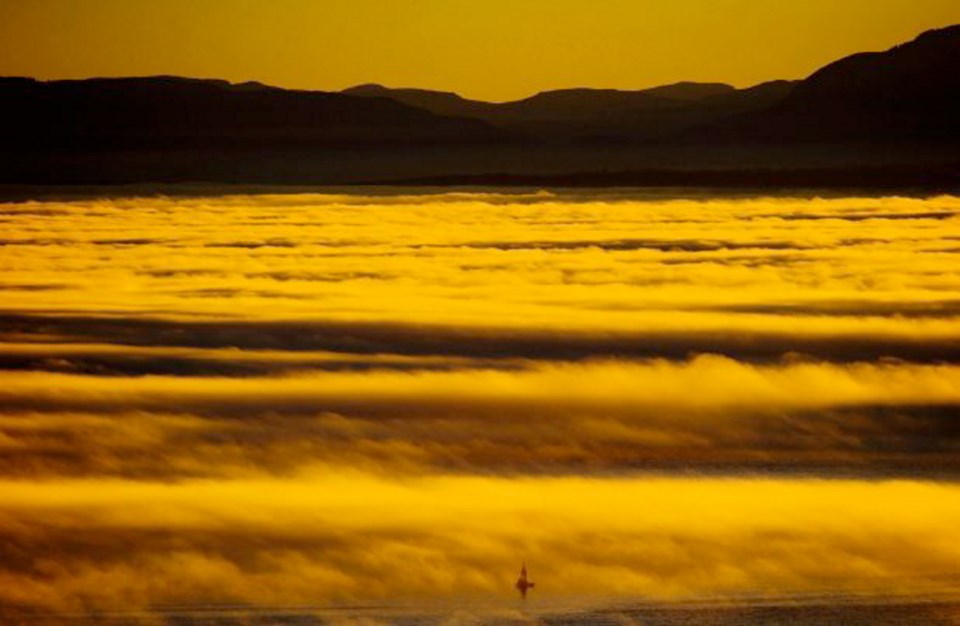VANCOUVER — The Salish Sea Basin was one of the “most densely populated” pre-contact geographical areas in North America, according to a new study.
The study, co-written by Richard M. Hutchings of the Institute for Critical Heritage and Tourism, was published in the Journal of Northwest Anthropology.
Immediately after contact with Europeans, Indigenous populations began crashing, Hutchings said. The arrival of diseases such as measles and smallpox was primarily responsible.
Hutchings, who lives on Gabriola Island, and fellow researcher Scott Williams, of the Washington state Department of Transportation, examined 85 large Salish Sea islands of at least two kilometres long. (They did not include sites on Vancouver Island.)
In total, the researchers looked at 2,368 sites from Johnstone Strait and Bute Inlet in the north down to Puget Sound and Juan de Fuca Strait, for their finding that the Salish Sea Basin had one of the highest pre-contact population densities in North America.
And they discovered something else: The earliest physical evidence of human seafaring and island occupation in the Americas is at Ayer Pond on Orcas Island in Washington, dating back 13,900 years ago, 900 years older than the previously known oldest such site, in California.
“It’s the oldest maritime site in North America by almost 1,000 years,” Hutchings said. “We didn’t know that, we had no expectation of [discovering] that whatsoever.”
The men had it confirmed by an expert, Jon Erlandson, an anthropologist at the University of Oregon and director of the Museum of Natural and Cultural History in Eugene.
Although the Salish Sea is an arm of the Pacific Ocean, the study compared its pre-contact waterways to the Mediterranean Sea, its inhabitants comparable to ancient Greek and Phoenician traders, or Vikings trading into the heart of Europe via its rivers.
“Not the violent part, but the trading part, the large-scale movement,” Hutchings said.
Consider, for example, paddling a canoe from Haida Gwaii to present day Victoria. And then back again. That’s some journey. A lot of people today don’t travel that far, let alone by canoe, as Hutchings pointed out.
While the Sunshine Coast and Vancouver Island have been inhabited for more than 14,000 years, only a small number of island sites are more than 5,000 years old. But that shows islands were occupied immediately after they were formed at the end of the last ice age, the study says.
The study says there are thousands of island sites younger than 5,000 years old, which indicates the use and management of all island ecosystems, many intensively.
“The paucity of early island sites is understood to reflect not the lack of early human use and occupation but rather landscape submergence and contemporary archaeological management and land use strategies,” the study says.
Hutchings and Williams counted 627 sites in B.C. waters, the rest being in Juan de Fuca Strait and Puget Sound. Salt Spring Island had the most sites in B.C. with 183, while Raza in the northern part of the Salish Sea had just one.
Today, those sites — defined as being a place with material evidence of a human presence — are threatened.
“One of the lessons from the Salish Sea study is there are sites everywhere,” Hutchings said. “Everywhere you pull up a canoe, chances are there’s a site there. Everywhere you want to build your house, if there’s not already a house there, chances are there’s a site there.”
And now, on top of the development that’s been going on for decades, these sites are threatened by rising sea levels.
“The impacts are enormous, the threats are enormous, that’s the downside of a fun, uplifting study,” Hutchings said. “All these sites are at enormous risk from a double whammy.
“This is the record of Coast Salish people and it’s all disappearing.”



